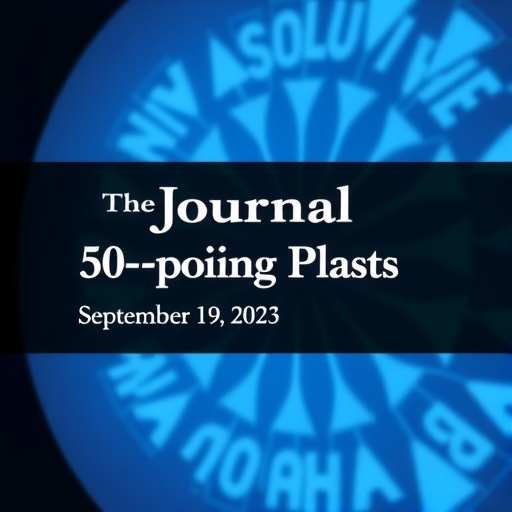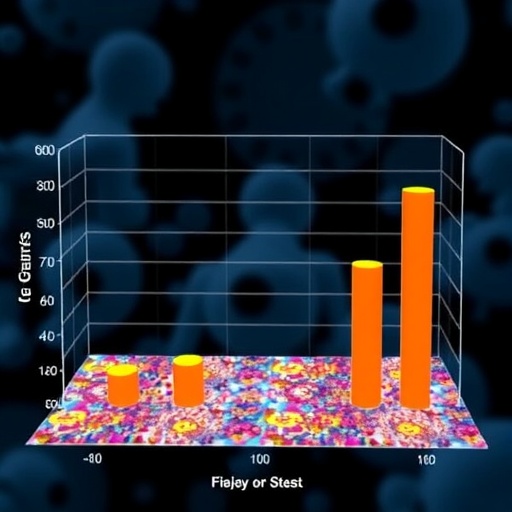Reston, VA (September 19, 2025)—In an era where precision medicine is revolutionizing healthcare, the latest batch of studies published ahead-of-print in The Journal of Nuclear Medicine unveils cutting-edge advancements in nuclear imaging and molecular diagnostics. These innovative techniques not only promise enhanced diagnostic accuracy but also open new avenues for personalized treatment approaches across a spectrum of diseases. Published by the Society of Nuclear Medicine and Molecular Imaging, these findings spotlight pivotal shifts in how we understand and visualize disease at the molecular level.
One of the groundbreaking studies focuses on the efficacy of shortened positron emission tomography/computed tomography (PET/CT) protocols for the assessment of liver inflammation linked to metabolic dysfunction-associated steatohepatitis (MASH). Traditionally requiring an hour-long dynamic acquisition, PET/CT imaging has now been tested in abbreviated scan durations of 10 and 15 minutes. Remarkably, results from 82 participants demonstrate that these faster protocols can reliably detect liver inflammation with fidelity comparable to the standard. Such innovations could drastically reduce patient burden and increase clinical throughput, while maintaining diagnostic rigor in chronic liver disease management.
In a separate technological breakthrough, researchers have developed PUMA, an open-source artificial intelligence framework designed to align multiple PET/CT scans derived from various radiotracers. By harnessing AI-driven segmentation algorithms alongside advanced image registration techniques, PUMA integrates heterogeneous datasets into seamless composite images. Tested on a cohort of 114 individuals, this multidimensional visualization provides richer insights into complex disease biology, deepening our understanding beyond what single-tracer imaging could achieve. This holistic approach holds promise for refining diagnoses and tailoring therapeutic strategies in oncology and beyond.
Further exploring the realm of molecular imaging, a focused investigation into fibroblast activation protein inhibitor (FAPI) PET/CT has shed new light on liver fibrosis within primary sclerosing cholangitis (PSC) patients. Evaluated in 18 individuals with PSC and/or cholangiocarcinoma (CCC), the study revealed elevated fibroblast activation protein expression indicative of fibrotic activity. Importantly, distinct uptake patterns differentiated PSC from CCC lesions, suggesting that FAPI PET/CT may serve as a noninvasive biomarker for monitoring disease progression and liver function in PSC, though challenges remain in reliably detecting CCC.
Breast cancer surgery stands to benefit from advances in multispectral optoacoustic tomography (MSOT), a handheld imaging modality capable of capturing hemoglobin contrast to distinguish malignant from benign tissue. In a trial involving 45 women, MSOT provided safe and noninvasive visualization of breast tumors and sentinel lymph nodes both pre- and postoperatively. The technology’s ability to delineate tumor margins swiftly could revolutionize breast-conserving surgical procedures, minimizing the need for repeat surgeries and improving patient outcomes by ensuring more complete tumor excision.
Cardiovascular medicine also gains a novel imaging biomarker through PET scans targeting CXCR4, a chemokine receptor implicated in inflammatory responses post-myocardial infarction. In a 49-patient study, elevated CXCR4 expression correlated with larger infarct size and poorer functional recovery as assessed by cardiac MRI and perfusion scans. These findings mark a significant step in prognosticating cardiac repair and raise the prospect of using CXCR4 PET imaging as a guide for individualized therapeutic interventions aimed at modulating post-infarct inflammation.
Moving to prostate cancer, an automated deep learning workflow was developed to analyze PET and single-photon emission computed tomography (SPECT) scans of patients undergoing Lutetium-177-PSMA (LuPSMA) radioligand therapy for metastatic castration-resistant disease. Leveraging a dataset exceeding 1,500 scans for training, the AI model achieved high accuracy in mapping the extent of disease and quantifying tracer uptake. This tool not only streamlines complex image analysis but also augments clinical decision-making, offering prognostic insights and optimizing therapy planning in a population with limited treatment options.
Together, these studies epitomize the evolving landscape of nuclear medicine and molecular imaging, where artificial intelligence, novel radiotracers, and innovative scanning protocols converge to enhance both diagnostic precision and therapeutic efficacy. The integration of multidimensional data streams, reduction in scan times, and real-time intraoperative imaging are transforming patient care paradigms, heralding a new age of tailored, image-guided medicine.
The Society of Nuclear Medicine and Molecular Imaging continues to champion these advancements, underpinning the pivotal role of molecular imaging in translating biological insights into clinical realities. As diagnostics become faster, smarter, and more patient-centric, these research breakthroughs illuminate pathways toward earlier detection, better disease monitoring, and ultimately improved survival rates.
Scientists and clinicians worldwide are encouraged to explore these developments further via The Journal of Nuclear Medicine’s official website, where detailed data and methodological nuances are accessible. Additionally, the Society’s active social media channels provide platforms for ongoing discourse and dissemination of emerging findings, fostering a vibrant community committed to propelling nuclear medicine into the future.
As nuclear imaging technology matures, its synergy with artificial intelligence continues to unlock unprecedented capabilities. Whether visualizing inflammatory markers post-heart attack or delineating tumor boundaries intraoperatively, the fusion of molecular data with AI-powered interpretation stands as a beacon for precision oncology, hepatology, and cardiology alike. Such integration not only accelerates diagnosis but also empowers clinicians with comprehensive biological insights vital for precision therapeutics.
The use of shortened PET/CT protocols for liver inflammation represents a paradigm shift by balancing image quality with patient convenience, addressing long-standing limitations of scan duration. Meanwhile, frameworks like PUMA exemplify the power of data harmonization, enabling researchers and physicians to transcend traditional imaging silos and harness composite molecular signatures critical for disease characterization.
In summary, the constellation of newly published research heralds a transformative era in nuclear medicine. By marrying sophisticated imaging modalities, AI-driven analytics, and innovative tracers, these advancements pave the way for more responsive, personalized healthcare interventions that align with the molecular heterogeneity of disease.
Subject of Research: Molecular imaging advancements in nuclear medicine, including PET/CT protocols, AI-assisted imaging, and novel tracers for liver inflammation, cancer, and cardiac disease.
Article Title: Multiple studies advancing precision nuclear medicine through innovative imaging techniques and AI integration.
News Publication Date: September 19, 2025
Web References:
https://doi.org/10.2967/jnumed.124.269434
https://doi.org/10.2967/jnumed.125.269688
https://doi.org/10.2967/jnumed.125.270434
https://doi.org/10.2967/jnumed.125.269852
https://doi.org/10.2967/jnumed.125.270807
https://doi.org/10.2967/jnumed.125.270077
Keywords: Molecular imaging, Medical imaging, Positron emission tomography, Artificial intelligence, Fibroblast activation protein, Multispectral optoacoustic tomography, Cardiac imaging, Prostate cancer, AI in nuclear medicine
Tags: abbreviated PET/CT protocols for liver inflammationartificial intelligence in medical imagingdiagnostic accuracy in chronic liver diseaseinnovations in disease visualizationmetabolic dysfunction-associated steatohepatitis researchmolecular diagnostics in healthcarenuclear imaging advancementsopen-source AI frameworks in healthcarepatient burden reduction in imagingpersonalized treatment approaches in nuclear medicineprecision medicine in nuclear medicineSociety of Nuclear Medicine and Molecular Imaging





